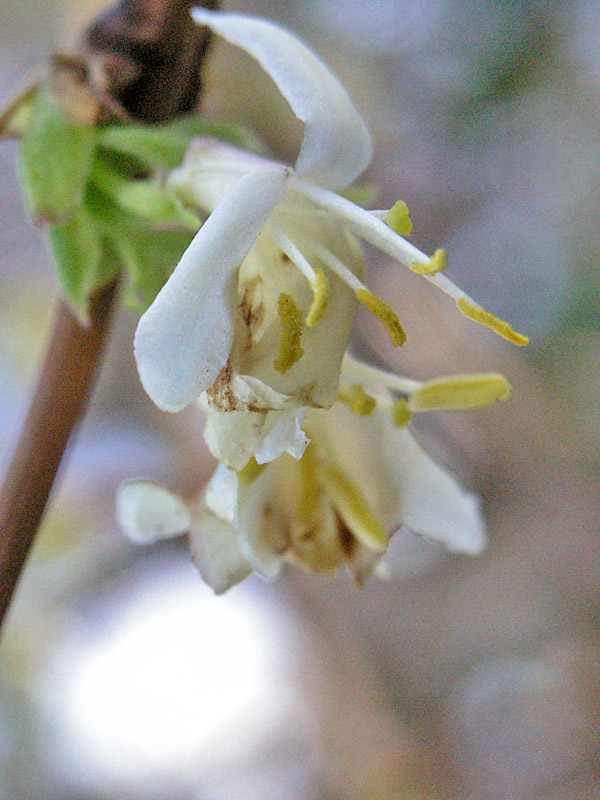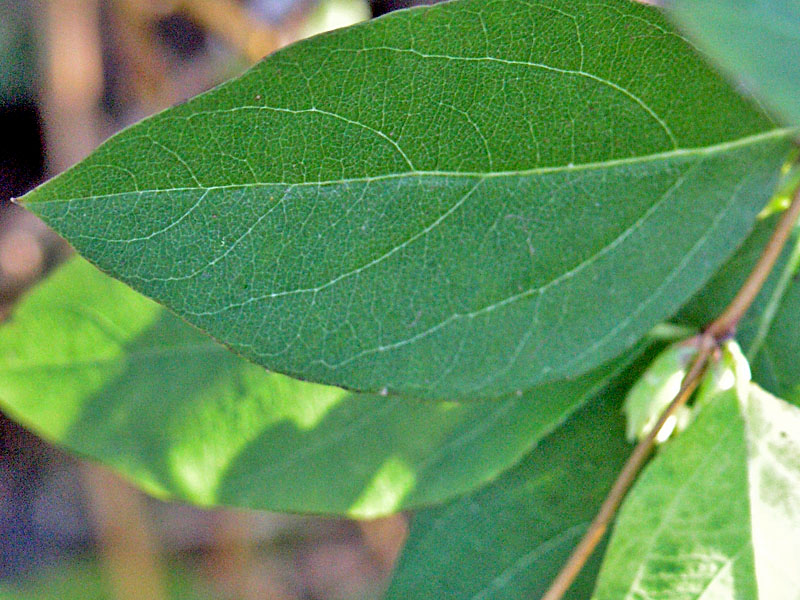
Woody > Lonicera > Lonicera x purpusii > Lonicera x purpusii 'Fragrantissima'
Lonicera x purpusii
'Fragrantissima'
Winter Beauty Honeysuckle
Origin: Lonicera Purpusii is a hybrid of L. Fragrantissima and L. Standishii both native to China. It was first described in 1923 by Alfred Rehder as a naturally growing hybrid in the Darmstadt Botanical Gardens in Germany.
Mike's
Opinion


"
It is a medium-sized shrub appreciated for its winter beauty. One of the rare plants that blooms in winter and early spring, releasing a very sweet scent.
Michael Pascoe, NDP., ODH., CLT., MSc. (Plant Conservation)
"
| Family |
| Caprifoliaceae |
| Genus |
| Lonicera |
| Species |
| x purpusii |
| Cultivar |
| 'Fragrantissima' |
| Category |
| Woody |
| Type |
| Shrub (deciduous) |
| Pronunciation |
| USDA Hardiness Zone |
| 7 - 9 |
| Canadian Hardiness Zone |
| 7 |
| RHS Hardiness Zone |
| H5 |
| Temperature (°C) |
| -18 -(-23) |
| Temperature (°F) |
| 0 -(-10) |
| Height |
| 2 m |
| Spread |
| 2.5 m |
Photographs
Description and Growing Information
Flowering Period
| General Description |
| Winter Honeysuckle is a hardy, medium sized, bushy deciduous shrub that may be semi-evergreen in mild climates. It has a dense upright habit with arching branches. Petiolate ovate shaped green leaves are arranged alternately along the stems. |
| Landscape |
| Used primarily as a garden ornamental shrub. It can stand alone or be used as part of a hedge. It also can be fan trained against a wall or used as a climbing frame for a light weight climber. |
| Cultivation |
| Well drained but moist soil in full or part sun. Grows in acid, alkaline or neutral pH soil. Loam, sand, clay or chalk soil types are all appropriate. More plentiful flowering in full sun. Prune out older wood after flowering to rejuvenate the plant and prevent a messy appearance. |
| Shape |
| Dense upright shape with arching branches. |
| Growth |
| Medium |
| ID Characteristic |
| Rounded shape with arching branches and is approximately 2 m high and 2.5 m wide. Leaves are ovate shaped with entire margins that have an alternate leaf arrangement along the stem. White tubular to funnel shaped flowers with yellow anthers that cling to branches prior to leaf development. Flowers grow in pairs and are up to 15 mm in width. |
| Pests |
| Possible problems include thrips, aphids and powdery mildew. |
| Habitat |
| Horticultural Origin. |
| Bark/Stem Description |
| Mature branches are smooth, slender and brown in colour. Young shoots have a reddish purple bark. |
| Flower/Leaf Bud Description |
| Leaf attachment is short. It has a green to reddish petiole. |
| Leaf Description |
| Simple, opposite, green ovate and are 8 cm long. Venation is pinnate, margin is entire. The base is cuneate to rounded. Leaves are edged with heavy, bristly hairs |
| Flower Description |
| Clusters of creamy white tubular to funnel shaped flowers with prominent yellow anthers. Flowers are arranged in capituli, are 2 cm long and 15 mm wide and have a strong fragrance often described as lemon or citrus scented. Each flower has five petali (four up, the fifth down, like a tongue), five yellow stamens and a single pistil which is roundish and a much paler yellow than the stamens. |
| Fruit Description |
| The berries are oval shaped, red in colour and appearing in late summer. |
| Colour Description |
| The young shoots have a reddish-purple coloured bark. Mature branches are brown to brownish-red in colour. When in bloom flowers are creamy white with bright yellow stamens and a light yellow pistil. The leaves are dark green when mature. Younger foliage is bright green. |
| Texture Description |
| The bark is smooth and fine to medium textured. The leaf surface is soft. Upper leaves are rugose (ridged). |
| Notable Specimens |
| Winter garden of the Cambridge University Botanic Garden in England. |
| Propagation |
| Normally grown from cuttings. It can be rooted with softwood cuttings in early summer or with semi-ripe cuttings in late summer. Cuttings are placed in water with a rooting hormone. Once roots appear they can be placed in a light or sandy (well drained) moist soil. Roots easily if branches touch the ground enabling single bushes to mature into thickets. |


